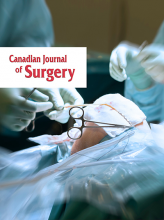A 44-year-old woman was seen by her family physician, complaining of vague discomfort in the right foot and ankle. She had a medical history of hypertension, obesity and type 2 diabetes mellitus. She denied any injury and any unusual recent increase in physical activity. Physical examination demonstrated increased warmth of the foot compared with the opposite side and a slight fullness in the midfoot, particularly on the plantar surface. No radiographs were obtained; an anti-inflammatory agent was prescribed.
The patient returned 3 weeks later complaining of increased swelling, warmth and redness in the foot. She had no particular complaints of pain. On this occasion the family physician obtained a radiograph (Fig. 1).
Because of concern over the possibility of infection secondary to her known diabetes, the patient was referred for needle aspiration at the hospital clinic. No purulent material was identified, and the fluid specimen obtained was heavily blood stained. Cultures of the specimen produced no growth.
Eventually the patient was referred for orthopedic assessment. At that time she noted significant deformity of the foot with increasing difficulty walking. The foot was red, swollen and deformed with increased fullness on the plantar surface and obvious abduction of the forefoot.
New radiographs (Fig. 2) were obtained. A diagnosis of Charcot arthropathy was made, based on the extent of disorganization of the foot, lack of significant pain, rapid progression of bone destruction and negative findings on culture of the aspiration specimen.
Charcot arthropathy is a well-recognized disorder primarily seen in the lower extremities of patients with impaired position sense or impaired pain perception. Common conditions associated with Charcot arthropathy include tabes dorsalis, diabetes mellitus and syringomyelia. Usually occurring in the weight-bearing joints of the lower extremity it can also be seen in the upper extremity usually in the shoulder or elbow. Typical findings in the upper extremity include relatively painless joint destruction usually associated with instability. Common symptoms in the lower extremity consist of moderate discomfort, increasing deformity and characteristic radiographic features including bone destruction, joint disorganization and atypical new bone formation.
Treatment for these patients varies according to their age, the joint involved and extent of joint disorganization and the presence of adjacent bone destruction.
Conventional orthopedic joint procedures such as arthrodesis or arthroplasty have a recognized higher failure rate in neuropathic joints, and conservative treatment, if possible, is recommended. With regard to the management of Charcot arthropathy of the foot, early recognition of the problem is the key to satisfactory management. If the foot can be supported appropriately to prevent excessive deformity a satisfactory outcome may be obtained. Significant deformity is, unfortunately, often associated with unacceptable points of pressure resulting in skin breakdown and ulceration, deep infection and eventually amputation (Fig. 3). Surgical realignment is recommended if pressure off-loading (bracing) is unsuccessful in healing the ulcer, in severe deformities or when a deformity progresses in spite of full-time bracing. The surgical goal is to provide the patient with a braceable extremity that is ulcer free. The use of rigid internal fixation has improved the outcomes, making surgical realignment a viable alternative to amputation of the foot.
Footnotes
Submissions to Surgical Images, musculoskeletal section, should be sent to the section editor: Dr. Norman S. Schachar, Heritage Medical Research Building, 36–3330 Hospital Dr. NW, Calgary AB T2N 4N1; fax 403 270-0617.









